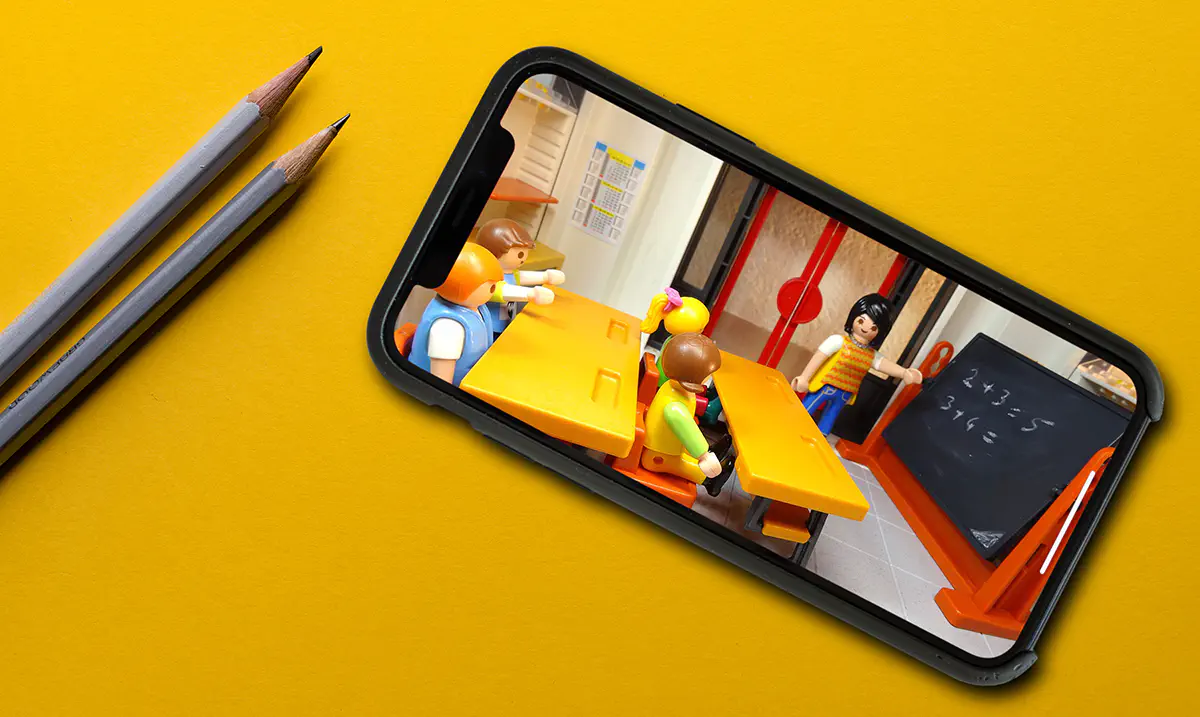Classroom in a Pocket? Creating a Mobile eLearning Environment

eLearning has transformed modern education. Over the last fifteen years, education has gone from paper to platform and app-based, with students and teachers learning together in remarkable new ways.
One of those key trends is the move away from laptops and tablets onto smartphones. Students want the convenience of a virtual classroom on a much smaller screen. As an eLearning environment, phones can be used for research, collaborative learning, taking notes in lectures, and even writing and submitting essays and papers.
eLearning industry trends
Schools, colleges and private learning providers are responding to these trends. Teachers and administrators are finding that new ways of learning make it easier to engage with students, keep parents informed and manage the administration of education. It is perhaps no surprise that the eLearning sector is growing quickly, currently expected to be worth over $390 billion in 2026, with growth rates of 9.5%.
For schools, colleges and other companies in this sector, one of the challenges is understanding how to create a mobile eLearning environment that meets the needs of students and educators. If you take your average learning management system (LMS) - most were designed for desktops not smartphones - there is a lot of information and functionality to squeeze into a smaller screen. With this, a trusted mobile elearning app development company can help.
What does a mobile eLearning environment need?
When we think about mobile training and learning functionality, there are a few essentials that every eLearning app needs.
1. Course material access
Access to course materials on a phone means that students can work whenever they can. Instead of needing the space to use a laptop, they can be studying on a bus, on a bench, and whenever they find a moment to work or read up on something for their next class.
A mobile learning app also means that tutors can upload materials using a smartphone. Giving teachers the same flexibility as students saves them time, which is a valuable commodity in the education sector when everyone is busy. It also gives tutors the ability to upload new reading materials and research on-the-go. With the right mobile learning solutions, tutors should be able to upload course materials in a variety of formats, providing they’re mobile-friendly for the students reading them in the app or downloading them.
2. Essay/paper submissions and grading system
Students are studying and writing papers using smartphones. It is a convenience that was hard to imagine only ten years ago. Modern eLearning environments need to offer students a way to upload completed essays/papers and receive grades from tutors.
For many mobile learning tools, this upload and feedback system is a minimum necessity. It is equally useful when tutors can make comments throughout a paper, thereby indicating where improvements are needed or where a student has made a particularly good point.
3. Teacher/tutor connectivity
To truly enhance the learning experience, students and tutors need a reliable system for communicating beyond the walls of the classroom. When it comes to essay assignments, students may need extra guidance, seek deadline extensions, or simply want to ask questions that build on their knowledge. On the other hand, tutors prefer a messaging platform that is specifically designed for the classes they teach, as it ensures that student queries don’t get lost in a sea of other messages in their inbox.
Enter in-app messaging, the perfect solution for students and teachers alike. With this handy tool, students can connect with their teachers directly from their smartphones, without having to worry about emails cluttering up their inbox or teachers needing to provide their personal phone number. In-app messaging keeps everything in one easy-to-manage place, providing a more convenient experience for both learners and educators.
4. Peer learning connectivity
It is increasingly common practice that students collaborate on course notes. In universities across the world, students create Facebook and WhatsApp or Snapchat groups to collaborate and share notes. Google Docs is a popular format for taking notes in lectures; with everyone who attends or couldn’t attend able to contribute notes and links to extra reading.
When you are creating an eLearning environment, it’s important to remember the way students prefer to learn and work together. In practice, that means giving them easy ways to connect within the app, share notes, share documents and collaborate on coursework questions and essays.
5. Administrative support
As another essential requirement, it’s helpful for students and college admin staff to give students easy access to administrative information through learning apps. It’s crucial for learning apps to provide students with seamless access to everything from grades and student loan information to term dates and campus opening hours. And it’s equally important to enable students to update their personal information, such as addresses and contact details. This way, students can stay on top of their administrative requirements without having to make countless phone calls or visit the school’s office. It’s a win-win situation for both students and admin staff, as it streamlines communication and makes managing a student’s welfare much more straightforward.
By having this information at their fingertips, students can stay on top of their academic and administrative responsibilities, leading to improved academic performance and overall success. At the same time, admin staff can focus on other crucial tasks, confident in the knowledge that students have everything they need to stay on track.
Final thoughts
Beyond these minimum features, every school and college - whether you are K-12, a college or an online education company - will have other features they need, unique to them. When you are designing a mobile learning environment, the user-experience is a key consideration.
Quick, easy to navigate and intuitive is what students and teachers want, otherwise it could prove an underused service. Off-the-shelf systems rarely provide the sort of functionality that students and teachers need, and customization is often difficult and time-consuming. With custom eLearning solutions, you can create a mobile learning strategy that is tailored around the journey a student takes from when they enrolled to when they graduate.
Don't want to miss anything?
Subscribe and get stories like these right into your inbox.
Keep reading

6 Secrets of Successful Language Learning App Development
Learning a new language is almost de rigueur today, as globalization demands multilingual skills. Language learning is a chance to improve one's intellectual capability.

eLearning Mobile App Development: Practical Guide
Educational mobile apps are becoming increasingly popular. Dive into our comprehensive e-learning mobile app development guide to gear up for the launch of your own project.

Virtual Classroom Software: Features and Benefits
Want to build your own virtual classroom software? In our blog post, we share our practical recommendations on how to do it.
Contact us
Let's explore how our expertise can help you achieve your goals! Drop us a line, and we'll get back to you shortly.